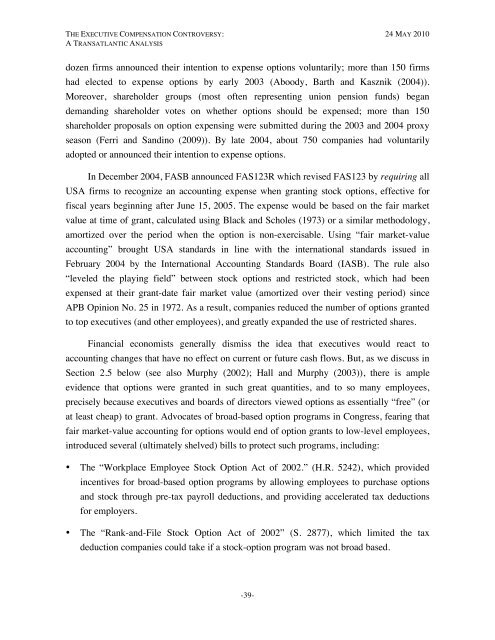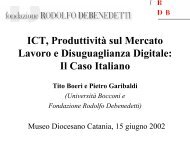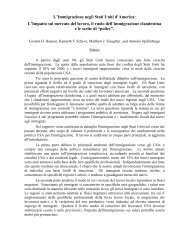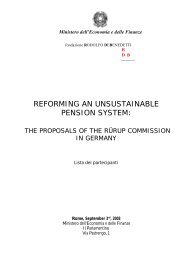The Executive Compensation Controversy - Fondazione Rodolfo ...
The Executive Compensation Controversy - Fondazione Rodolfo ...
The Executive Compensation Controversy - Fondazione Rodolfo ...
You also want an ePaper? Increase the reach of your titles
YUMPU automatically turns print PDFs into web optimized ePapers that Google loves.
THE EXECUTIVE COMPENSATION CONTROVERSY: 24 MAY 2010A TRANSATLANTIC ANALYSISdozen firms announced their intention to expense options voluntarily; more than 150 firmshad elected to expense options by early 2003 (Aboody, Barth and Kasznik (2004)).Moreover, shareholder groups (most often representing union pension funds) begandemanding shareholder votes on whether options should be expensed; more than 150shareholder proposals on option expensing were submitted during the 2003 and 2004 proxyseason (Ferri and Sandino (2009)). By late 2004, about 750 companies had voluntarilyadopted or announced their intention to expense options.In December 2004, FASB announced FAS123R which revised FAS123 by requiring allUSA firms to recognize an accounting expense when granting stock options, effective forfiscal years beginning after June 15, 2005. <strong>The</strong> expense would be based on the fair marketvalue at time of grant, calculated using Black and Scholes (1973) or a similar methodology,amortized over the period when the option is non-exercisable. Using “fair market-valueaccounting” brought USA standards in line with the international standards issued inFebruary 2004 by the International Accounting Standards Board (IASB). <strong>The</strong> rule also“leveled the playing field” between stock options and restricted stock, which had beenexpensed at their grant-date fair market value (amortized over their vesting period) sinceAPB Opinion No. 25 in 1972. As a result, companies reduced the number of options grantedto top executives (and other employees), and greatly expanded the use of restricted shares.Financial economists generally dismiss the idea that executives would react toaccounting changes that have no effect on current or future cash flows. But, as we discuss inSection 2.5 below (see also Murphy (2002); Hall and Murphy (2003)), there is ampleevidence that options were granted in such great quantities, and to so many employees,precisely because executives and boards of directors viewed options as essentially “free” (orat least cheap) to grant. Advocates of broad-based option programs in Congress, fearing thatfair market-value accounting for options would end of option grants to low-level employees,introduced several (ultimately shelved) bills to protect such programs, including:• <strong>The</strong> “Workplace Employee Stock Option Act of 2002.” (H.R. 5242), which providedincentives for broad-based option programs by allowing employees to purchase optionsand stock through pre-tax payroll deductions, and providing accelerated tax deductionsfor employers.• <strong>The</strong> “Rank-and-File Stock Option Act of 2002” (S. 2877), which limited the taxdeduction companies could take if a stock-option program was not broad based.-39-









